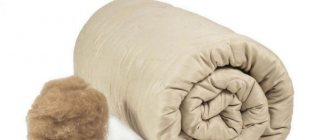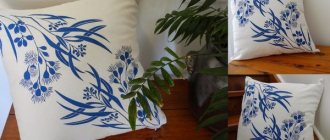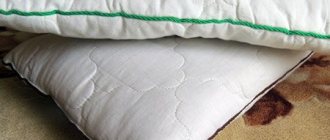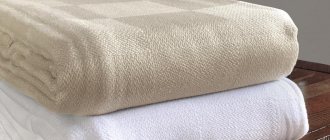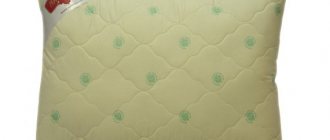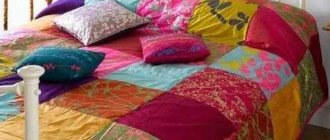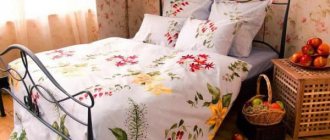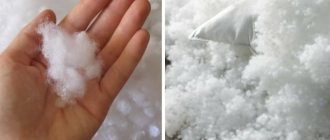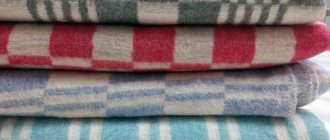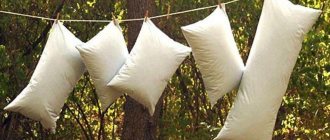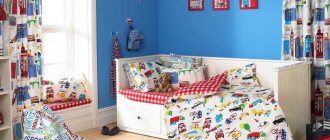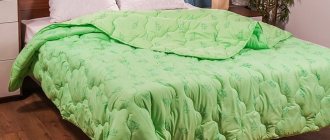Bamboo or eucalyptus? Both fillings are good for use in blankets and pillows. Let’s take a closer look at what their differences are and which blanket is right for you.
Modern technologies make it possible to produce blanket fillings not only from soft natural materials such as wool, down, and plant fiber (cotton).
It has now become possible to obtain excellent soft and elastic materials from wood by chemical or mechanical processing. The resulting fiber has excellent properties: it is light, soft, elastic, wear-resistant and hygroscopic. In addition, it does not cause allergies. Blanket fillings are made from two types of wood: eucalyptus and bamboo. At first glance, it may seem that eucalyptus blankets are no different from bamboo blankets. But upon closer examination of the unique qualities of each of these blankets, it becomes clear that different source materials impart different properties to the products made from them.
Eucalyptus blanket: pros and cons
pros
The advantages of natural filler include:
- Healing qualities. Due to the essential oils contained in the fibers, a eucalyptus blanket has a beneficial effect on human well-being, improving blood microcirculation.
- Antibacterial. Bedding prevents the spread of dust mites. The filler is also distinguished by the fact that it does not accumulate static electricity, which is why it can also be suitable for a newborn baby.
- Wear resistance. A blanket made of eucalyptus fiber retains its shape perfectly without absorbing unpleasant odors.
- Hygroscopicity. The blanket breathes and can absorb moisture, creating excellent temperature balance. When purchasing, you just need to pay attention to the density of the products: the higher it is, the warmer the sleeping accessory will be. Summer bedspreads have a density of 100 g. per sq. meter. The winter blanket is much thicker - 300 g. per sq. meter. The greatest demand is observed among buyers for off-season blankets with a density of 200 grams. per sq. meter.
Eucalyptus fiber
Minuses
Among the disadvantages of bedspreads made from natural filler, buyers most often mention only the price. The cost of eucalyptus pillows and blankets is higher than other sleep products. But even in this matter, before purchasing a bedspread, it is important for the buyer to study it thoroughly so as not to run into a fake. The blanket label should indicate Lyocell or Tencel. Lyocell is the second name for eucalyptus fiber obtained by chemical method. Tencel is the trade name for the material Lyocell.
Eucalyptus fiber production
Features of bamboo filler
Bamboo fiber is very thin and yet durable. This makes products made from it wear-resistant. It is light in weight and holds its shape well, given during production, which allows the production of light, soft and elastic pillows and blankets. Bamboo contains a special substance - bamboo kun, which protects the plant from harmful bacteria and microbes. During the production of bamboo fiber for filling bedding, this substance is not lost, due to which bamboo pillows and blankets acquire antibacterial properties. A bamboo blanket is well ventilated and can quickly absorb excess moisture from the body. A bamboo blanket is perfect for the hot season, thanks to its lightness, breathability and hygroscopicity. For winter, you can also choose a bamboo blanket with a maximum amount of filler - 300 g/m2; the filler in winter bamboo blankets is properly “fluffed”, as a result of which the blanket is able to accumulate and retain a large amount of warm air. The hygroscopicity of a warm bamboo blanket provides the effect of “dry heat”, which is the most favorable microclimate for sleep.
The difference between a eucalyptus blanket and a wool blanket
When choosing between eucalyptus and wool fillings, many buyers often prefer material made from exotic plant fibers. And such a choice is quite understandable, because a blanket made of eucalyptus filling is pleasant to the touch and absolutely hypoallergenic, which is why it is suitable for almost everyone.
A wool blanket also has many advantages: it is very warm and can absorb moisture. Wool also has healing qualities that calm the nervous system. But wool products have a significant drawback: they are contraindicated for people prone to allergic reactions. In addition, such accessories strongly attract moths, and therefore problems with storing woolen products cannot be ruled out.
Questions - answers
Which blanket is better, bamboo or holofiber?
The materials are similar: hypoallergenic, easy to wash, last about 7 years and weigh a little less than a kilogram. But they have different structures, bamboo has long soft hairs, and holofiber has springy fibers. Therefore, a bamboo blanket is better suited for the summer; it evaporates moisture well and provides almost no heat. Holofiber cannot remove moisture, but it retains heat better and is therefore suitable for the off-season. Bamboo is a natural fiber, so it costs a little more, the price varies by literally 15%.
Which blanket is better, camel or swan down?
A camel down blanket is of natural origin, so it has a beneficial effect on the body thanks to lanolin (animal wax). But due to the natural nature of the fibers, it can cause allergies, requires careful care and is expensive. Such problems are not typical for artificial swan down filler. The synthetic counterpart is lighter and airier than the camel down model, but it warms worse and lasts less.
Swan's down or sheep's wool?
In terms of cost and service life, the blankets are actually equal, but they differ very much in tactile sensations. Wool is a dense and elastic material, while artificial swan down is lighter and airier. Wool prevents a person from sweating and creates a favorable climate thanks to lanolin (animal wax), but it is also more expensive and requires dry cleaning. If you are allergic or do not have time for complex care of the blanket, then choose a model made of swan down.
Wool or fluff?
The fluff is soft, airy and light to the touch, fluffs up very well, while wool, on the contrary, is more elastic and dense. The weight difference is 3 times! Wool contains lanolin, an animal wax that has a beneficial effect on the body. But down also has something to answer for: it will last almost 2 times longer, and it is easier to care for; some models can be washed in a machine. What is warmer, down or wool? Both fillers retain heat well, but do not remove moisture well. Down costs significantly more.
Winter blanket: which filler to choose
The warmest fillings are wool, cashmere and down. But it’s worth paying attention to such artificial materials as padding polyester, holofiber or swan’s down. Natural and artificial blankets generate warmth in different ways. There are many air chambers in the structure of hair or fluff that retain heat and allow air to circulate through the blanket. Modern fillers clog the air under the blanket and heat it up, but if you don’t have problems with sweating, then you won’t even feel the “stuffiness”. Natural fillers are more expensive, but also last longer.
Summer blanket: which filling is better
For sultry heat, plant fibers are an excellent solution: eucalyptus, bamboo or flax. These fillers have natural cooling properties and quickly absorb and evaporate moisture. Under such a blanket a person will never wake up in wet sweat. Due to their good hygroscopic properties, models with these fillers are also available in all-season versions. If you are looking for an option for the summer, make sure that the TOG (indicator of the warmth of the blanket) is at a minimum of 3-4.5.
All-season blanket: which one is better to choose?
Silk and cotton are good choices for fall, winter, and spring. In the warm off-season, they allow air to easily pass through the blanket and cool, but in winter, on the contrary, they form a warm microclimate. Synthetic winterizer and holofiber do not allow air to pass through so well, so in the summer it can be hot under them, but for the off-season this feature, on the contrary, becomes an advantage, because it is very warm under such blankets. If a person does not sweat heavily, then down, wool and cashmere are very comfortable options.
Which blanket is better, bamboo or eucalyptus?
Blankets made from eucalyptus and bamboo are equally good to use: they are lightweight and suitable for sound sleep in any climate. But how do you decide whether to choose eucalyptus or bamboo? Which filler is better? When choosing a material, it is important for each buyer to focus on his own preferences. If the primary goal when purchasing is environmental friendliness, then the best option would be accessories made from bamboo, because it is considered an inexhaustible natural resource.
If you suffer from frequent colds, it is recommended to opt for eucalyptus bedspreads. Such accessories are also ideal for people who like to bask in comfortable coolness in the summer.
Varieties
Eucalyptus blankets come in different sizes and thicknesses. They differ in color. They come in plain colors and with patterns.
There are three product groups:
- for summer - density is 100 g per square meter;
- for winter - density 300 g per square meter;
- universal - density 200 grams per square meter.
This is useful to know
Blankets with a high level of density are considered warmer.
In regions where there are no sudden temperature changes, it is advisable to buy a universal option. You can sleep under this blanket all year round.
Blanket bamboo-eucalyptus (two in one)
Very often on the textile market you can find products that are not 100 percent lyocell. The option with bamboo and eucalyptus filler two in one is quite common. Similar models are produced by manufacturers to reduce the cost of expensive bedding products. Therefore, if the issue is quality, then it is better to buy a product whose filler consists entirely of eucalyptus. But the two-in-one option can be an excellent alternative if you have a limited budget.
How does a pillow filled with eucalyptus feel?
Surprisingly, models with such soft-touch fiber do not wrinkle much under your head during sleep. The pillow seems high, elastic, springy. The filler pleasantly envelops the head, and you feel reliable support underneath. The upper spine is in an anatomically correct position. Elastic fiber keeps the skin smooth, preventing rough creases.
If you feel that the volume of the pillow is high, lightly stretch it along the seam and remove some of the filling. It was uncomfortable for me to sleep on the eucalyptus pillow; it seemed that my head was too elevated, but gradually the model slightly decreased in volume and became very comfortable for sleeping.
Manufacturers, prices
Eucalyptus blankets are produced by many companies, including domestic ones. The most popular manufacturers are the following companies:
- Ecotex . A domestic company engaged in the production of home textiles. The price of a blanket made of eucalyptus from Ecotex is from 2200 to 3850 rubles. The cost depends on the size of the product and the composition of the fabric;
- Sortex . Russian manufacturer producing bedding. Light and warm blankets filled with eucalyptus fiber belong to the Natura collection. The cost of a product from Sortex is from 1500 rubles;
- Prima . A domestic company that produces bedding. Some products are filled with recycled eucalyptus fibers, which have antibacterial properties. You can buy a Prima blanket for RUR 3,500. and higher;
- Togas . A Greek company that has existed for over 100 years and produces premium home textiles. Products with eucalyptus fiber from Togas are designed for people with sensitive skin. It is possible to sew home textiles to order. The cost of the blanket ranges from 22,000 to 33,000 rubles;
- Alvitek . Russian manufacturer producing bedding. The blankets are filled with eucalyptus and polyester fibers. The company produces both all-season and lightweight models. The price of the AlViTek product with eucalyptus is 1800-2800 rubles;
- Owl and Lark . A domestic company engaged in the production of home textiles. A blanket with eucalyptus fibers costs from 1,700 to 2,500 rubles. depending on size;
- Dargez . Russian manufacturer of textile products in the mid-price category. The blankets are filled with eucalyptus and synthetic fibers and come in three sizes. The cost of Dargez goods is from 1600 to 2400 rubles;
- LLC Lucy . Ivanovo factory specializing in the production of home textiles. The blanket filler is thermoset eucalyptus. Price ≈ 840-1150 rub. depending on the dimensions of the product;
- IvShveyStandard . Russian company producing home textiles. The blankets are filled with eucalyptus fiber and polyester in a 60/40 ratio. The cost of a product measuring 200x200 is about 2000 rubles.
Eucalyptus blanket. Reviews
Rating of the best fillings for blankets
Today you can find blankets with 20 different fillings.
At first glance, it may seem that the requirements for insulation for a blanket end with “warm”, “soft” and “light”. But in fact, in order to choose the perfect blanket, you need to have at least approximate knowledge about the properties of popular fillers: which one is heavier, which one holds heat longer, which one is the easiest to care for. Other factors may also influence your choice:
- Good thermoregulation;
- Fast moisture removal;
- Light weight (easy to store and wash even in a machine with a small drum);
- Life time;
- Texture: Some people like blankets that are airy and soft, while others prefer thick, smooth fillings.
This article contains all the materials that are used in modern blankets. We decided to rank them by premium, that is, the rating starts with models that are difficult and expensive to produce.
Down: the most airy, soft and elastic
Goose down is more valuable, but duck down is cheaper
The first place is occupied by natural down, which has been valued since ancient times. If you wrap yourself in a soft and airy blanket, you will feel like you are lying on a cloud. The fluff is manually collected from the bird's sternum during natural molting, when each fluff has matured and become sufficiently elastic. It comes in white and gray colors, but the shade has almost no effect on the characteristics of the filler.
The all-season double blanket weighs only half a kilogram, but it's enough to keep you warm even in the harshest winters. Unlike feathers, down does not protect birds from the external environment, but warms them, so the length of a very soft and elastic leg does not exceed 1 millimeter, and around it there are many delicate hairs 20 millimeters long. They retain a lot of heat, but do not prevent air from circulating freely. Before it gets into the blanket, the fluff undergoes many treatments, including silver ions, and becomes practically sterile. Thanks to the treatments, duvets last for about 25 years, and many of them can even be machine washed.
pros
- The most airy, soft and light;
- The weight of an all-season double blanket is about 450 grams;
- Ideal for winter and off-season;
- Does not accumulate static electricity;
- Excellent air permeability;
- Beats well;
- Can last up to 25 years;
- The filler does not cake or stick together.
Minuses
- High price;
- Some models cannot be machine washed;
- Not suitable for allergy sufferers.
Cashmere: the warmest
Cashmere is 8 times warmer than wool
To make one blanket, you need to manually collect down from 15-20 Kashmiri goats during their natural molting period once a year. After which the fluff is washed, combed and processed. One of the most expensive and rare materials rarely becomes a filler for blankets. But when it does, a model this soft and warm has few equals. Soft and delicate cashmere is valued even more than silk.
The filler always has a milky white tint, and in appearance it looks like yarn made of many small hairs. It is so thin (15 times thinner than a human being) that it cannot be distinguished with the naked eye. The hair is surrounded by a large number of air chambers, so under such a blanket it is always warm, but not hot. Although the filler is made from animal fluff, thanks to the unique structure of the hair, the blanket does not cause allergies, and it does not harbor microbes. Typically wool duvets are considered heavy, but the double cashmere model weighs just 800 grams.
pros
- The warmest filler (8 times warmer than wool);
- Hypoallergenic, despite animal origin;
- Suitable for any time of year;
- Has antibacterial properties;
- Therapeutic effect thanks to lanolin (animal wax);
- Serves up to 10 years;
- Absorbs moisture and quickly removes it;
- The all-season double blanket weighs only 800 grams.
Minuses
- High price;
- Dry cleaning only.
Silk: better thermoregulation
Despite its animal origin, the filler is completely hypoallergenic
Silk fiber for blankets is obtained in the same way as silk threads - from the cocoons of a butterfly called the silkworm. The cocoons are sorted by hand, the larvae are removed from them and wound on an arc until the thread weighs 25 grams. The length of one thread can reach up to 1500 meters. It is elastic, but moderately heavy, so a double blanket weighs about 1 kilogram.
There are two types of silk Silk is divided into two types: tussah (wild silkworm) or mulberry (kept in special conditions). Mulberry fibers are more valuable: silkworms feed on the leaves of one tree, and therefore their threads are uniform. They undergo only manual processing (washing, combing), and do not require chemicals, therefore they completely retain all their natural properties. Mulberry serves for about 20 years, and tussah - 6-7.
Silk filling is similar in appearance to cashmere; it is also white, resembles yarn and consists of many small threads. A silk blanket adapts best to body temperature; it is not cold under it in the off-season, and not hot under it in the summer. For some models, only dry cleaning is allowed, but the blanket does not cause problems in care because it repels dust, has natural bactericidal properties and is not a habitat for dust mites.
pros
- Excellent thermoregulation;
- Hypoallergenic despite animal origin;
- Has a cooling effect;
- Quickly absorbs and evaporates moisture;
- Suitable for hot nights and off-season;
- The service life is more than 20 years (mulberry, and tussah lasts 6-7 years).
Minuses
- High price;
- A double all-season blanket weighs about 1 kilogram;
- Almost all models require dry cleaning;
- These blankets are most often counterfeited.
Eucalyptus: best bactericidal properties
Eucalyptus is a natural antiseptic, and the fiber in the blanket retains its antimicrobial properties for more than 10 years
A eucalyptus blanket that breathes and quickly absorbs and wicks away moisture is perfect for hot nights. The filler consists of long light hairs that are obtained from the stems of eucalyptus trees. After processing, the fibers retain not only their porous structure, in which there is a lot of air in the pores, but also the antibacterial effect for which wood is famous. Thanks to this, all maintenance of the blanket is limited to annual machine washing. Eucalyptus contains essential oils that help you relax and promote sound sleep. Only the properties of the oils are transferred to the blanket, but not their smell. Even allergy sufferers can afford this model, because eucalyptus does not irritate the respiratory tract.
pros
- Great option for hot weather;
- Has good bactericidal properties;
- Soothing eucalyptus oils promote sound sleep;
- Quickly absorbs and absorbs moisture;
- A double all-season blanket weighs about 900 grams;
- Service life more than 10 years;
- Hypoallergenic and organic.
Minuses
- The price is above average.
- Low heat conductivity.
Wool: best "dry heat" effect
Wool contains lanolin - animal wax, which creates a favorable microclimate and has a good effect on the body.
A blanket filled with camel, merino or sheep wool can be used all year round because it provides dry warmth. The wool is cut, washed and dried by hand; this must be done very carefully, so it is impossible to automate the process. The filler feels elastic and dense, and looks like yarn with many hairs. The wool curls, bends, clings to each other with the help of microscales, so the filler will not migrate throughout the blanket. There is a lot of air between the hairs, and inside the hair itself there are a large number of air chambers, so the blanket warms well, but does not allow a person to sweat even during a severe cold. The filler is best suited for those who often get cold, as well as people with sore joints.
TOG (indicator of the warmth of a blanket) Woolen models do not have less than 6, although the scale starts from 3. Blankets with an index of 3-4.5 are designed for summer, 6-7.5 - warm off-season, 9-10.5 - cold off-season, and 12-13.5 – winter.
pros
- Very warm filler;
- for any time of year;
- Therapeutic effect thanks to lanolin;
- Serves 10-15 years;
- Not electrified;
- They don't sweat under such a blanket.
Minuses
- Not recommended for allergy sufferers (except for merino wool, the thickness of its hair is 14 microns, and wool thicker than 25 causes allergies);
- Some models cannot be machine washed;
- A double all-season blanket made from camel wool weighs about 1 kilogram, and from sheepskin - 1.2.
Linen: the best filler in the heat
Despite the fact that linen is considered the best option for hot weather, this blanket is quite heavy (1 kg)
Just as linen clothes are very comfortable in hot weather, a blanket with linen fiber is the most comfortable way to fall asleep on hot nights. Linen has natural cooling properties, allows air to pass through well and does not allow a person to sweat. The linen filling has a brown tint, but it is not noticeable under the duvet cover, so you can choose any color for the duvet cover. In order to extract bast fibers from the stem, the plant must first be soaked, and then crushed and shaken so that only the central part remains. The fibers resemble long hairs, which are held together into a single layer using heat setting. A linen blanket is heavy, but it is very easy to care for; the fibers contain silicon dioxide, which has a powerful antibacterial complex. Linen threads are even used to stitch wounds in surgery because they are antibacterial, hypoallergenic and are completely accepted by the body and then dissolved.
pros
- A good option for the summer;
- Excellent air permeability;
- Effectively absorbs and evaporates moisture;
- Bactericidal properties;
- Hypoallergenic and organic;
- Has a slight cooling effect;
- Machine washable.
Minuses
- Short-lived (lasts up to 7 years);
- A double all-season blanket weighs about 1.1 kilograms;
- The filler is considered unusual; not all brands use it.
Bamboo: organic filler
Bamboo stems are never treated with chemicals or growth enhancers.
A bamboo blanket is perfect for the warm season and for those who sweat a lot, because the product absorbs and evaporates moisture well. And also for allergy sufferers and people for whom it is important that the raw materials for the filler are completely organic. While bamboo is growing, it is not treated with anything, because it has strong bactericidal properties and grows at a speed of 75 cm per day. Then the fibers are combed out from the stems of the plant; in appearance they resemble long white hairs. The antibacterial properties of bamboo are preserved in the form of a filler: an independent Swiss company placed pathogenic microorganisms on bamboo fiber, 70% of them died within 24 hours. Another nice bonus from nature: bamboo contains copper sulfate chlorophyllin, so the blanket does not absorb odors and repels dust.
pros
- Ideal in hot weather;
- Absorbs moisture well and quickly evaporates it;
- Antibacterial properties;
- Eco-friendly and hypoallergenic
- Machine washable;
- A double all-season blanket weighs about 900 grams;
- Small price.
Minuses
- Short life (5-7 years);
- Low heat.
Polyester: the easiest to care for
The blanket requires such simple care that it is most often taken on camping trips.
Various fillers are made from polyester fibers: swan down, holofiber, 4L polyester fiber. They can consist of long hairs (swan's down) or look like many small spirals that are arranged chaotically (holofiber). But this mass will always be very light, loose and soft. The filler is considered the most airy of all artificial models, and therefore it is often called the best synthetic filler. Polyester fibers are hollow inside, but very springy, so even after numerous washes, the blanket itself returns to its original shape, it doesn’t even need to be fluffed. Polyester fibers warm well and dry quickly, but like any synthetic, they do not allow air to pass through very effectively. This model is perfect for the off-season or for people who do not suffer from excessive sweating.
pros
- Warm;
- Does not deform;
- Machine washable;
- Low price;
- Hypoallergenic;
- A double all-season blanket weighs about 900 grams;
- Long-lasting (up to 10 years).
Minuses
- It is electrified, like any artificial material;
- Poor air permeability;
- It practically does not absorb moisture, so in summer it can be hot under it.
Cotton: the most budget-friendly natural filler
Even if you spill something on the blanket, it can be easily washed off
If you have ever seen cotton bolls, you can easily imagine the filling of such blankets. They are collected by hand, then sorted by fiber length, processed and bonded at high temperatures into a single white layer. This procedure is completely safe for human health and the environment. Cotton blankets are especially comfortable during the mid-season period. They allow air to pass through perfectly, but do not remove moisture well: they quickly absorb and slowly evaporate it. Cotton is not the lightest material: a double duvet weighs just over a kilogram. But this is the most budget-friendly of all natural fillers. It is also very easy to care for: cotton fibers are resistant to alcohol, vinegar and temperatures up to 150 degrees.
pros
- Organic and hypoallergenic;
- Affordable price;
- Washable;
- Not electrified;
- Good filling for an all-season blanket.
Minuses
- A double all-season blanket weighs just over 1 kilogram.
- Short service life (5-7 years);
- It takes a long time to dry.
Sintepon: the best option for a summer residence
Reminds me of padding polyester from children's toys
Synthetic winterizer is used to insulate clothes, as a filler for toys, and also for blankets. A good quality synthetic padding blanket will last for about 2 years, but it is cheaper than all the fillings we talked about. Externally, the smallest white fibers made of 100% polyester resemble cotton wool, because padding polyester was originally developed as a lightweight analogue of batting. A double blanket weighs just over 1 kilogram. It warms well, but does not allow air to pass through and does not remove moisture well, so it is best suited for the off-season. It is not recommended to wash a padding polyester blanket, since after contact with water, padding polyester can lose volume and up to 50% of its thickness. But you can leave it at the dacha for the whole winter: the filling does not fall off, the blanket does not deform, and microorganisms will not appear inside the synthetic material.
pros
- The most budget-friendly;
- The best option for a summer residence;
- Ideal for off-season;
- Quite warm and voluminous;
- Hypoallergenic (however, the glue may cause allergies).
Minuses
- Short service life (up to 2 years);
- Cannot be machine washed;
- Weak hygroscopicity, it can be hot under it.
- A double all-season blanket weighs just over 1 kilogram.
How much do good blankets cost? The cost of a blanket made of silk starts from 20,000 rubles, from down, cashmere, eucalyptus, linen - from 10,000 rubles, cotton - 7,000 rubles, wool, bamboo, polyester fibers - 3,000 rubles, and padding polyester - 2,000 rub.
Are there any difficulties in caring for a eucalyptus blanket?
Caring for eucalyptus bedspreads does not cause much trouble. To ensure that bedding retains its original appearance, it is enough to adhere to the following rules:
- Do not soak products in water with a temperature exceeding 40 degrees.
- Do not use bleach when washing.
- do not iron bedspreads (it is better to leave such sleep accessories to dry on a horizontal surface).
Having appeared on the textile market in the 90s, eucalyptus blankets managed to compete with many recognized fillings. Buyers are attracted by the environmental purity of the material and its extraordinary softness. For this reason, such bedspreads are now actively purchased by both adults and children. Parents who buy a children's eucalyptus blanket (the dimensions of a blanket for a child are usually 100x150) create ideal conditions for their children to sleep.
In addition, by choosing eucalyptus products, buyers completely solve the problem of choosing bedspreads for many years to come. After all, if handled with care, eucalyptus blankets can serve their owners for up to 10 years or more.
Care instructions
A blanket made with eucalyptus fiber is easy to care for. However, it is worth paying attention to some nuances so that the product will delight you with its attractive appearance for many years.
Recommendations:
- Do not iron;
- It is undesirable to use stain removers with bleach and aggressive detergents;
- The product should be constantly ventilated;
- The water temperature during washing in the machine should not be hot.
On a note
It is better to dry a wet blanket in a horizontal position. You should straighten it first.
